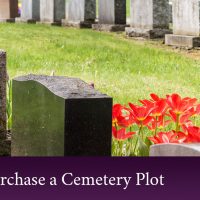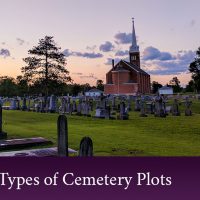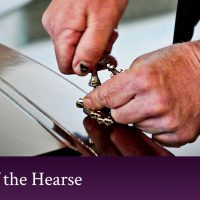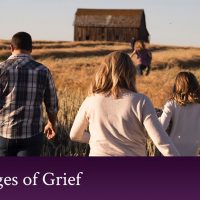The hearse is synonymous with funerals. Usually black in color, a hearse is a long car specifically designed to carry a coffin and is used almost exclusively for such a purpose. But did you know a hearse did not always refer to a car that transported the dead? So how did the hearse come about? A Chelmsford funeral home, Dolan Funeral Home, offers the best funeral home services in the greater Lowell area in Massachusetts. In this blog post, we’ll review the incredible history of the hearse. Contact us today!
ORIGIN OF THE WORD HEARSE
Interestingly, when the word hearse is mentioned, an image of a long, black car carrying a coffin pops up. However, hearse didn’t always refer to a car. In fact, hearse referred to a castrum doloris, which is a frame that held candles and decorations over the coffin during a funeral. Like half the words in the English language, the word (originally spelled herse) comes to us from the Latin word “hirpicem,” which means a large rake. The castrum doloris were triangular in shape and had spikes for the candles, thus resembling a rake — hence the name. Then hearse meant the structure around a coffin until finally settling on a vehicle used during a funeral procession around the mid 17th century.
ORIGIN OF CARRYING THE DEAD
In ancient times, when people died, someone had to carry the body to its final resting place. Warriors would place dead kin on shields and haul them off the battlefield. For thousands of years, biers were used which were simple wooden structures resembling stretchers that both served as the place loved one rested before burial and the transport method when it was time to transport to the cemetery. Native Americans constructed travois, or wooden frame structures to first carry and then use a horse to pull the dead to the burial ground. What began as a purely utilitarian need (transport a heavy body) became an elaborate ritual and part of the grieving and mourning process when a loved one dies.
ORIGIN OF THE MODERN HEARSE
A hearse (or funeral coaches in some countries and a more common usage amongst those in the funeral industry) began as a hand-drawn cart with a built-in frame to prevent the coffin from slipping. As the hearses became more decorated and elaborate, horses were recruited to draw the coach in the early 1600s. Hearse trolleys came about in the late 1800s, which allowed bodies to be transported by rail. This continued until the invention of the automobile, with the first electric motorized hearses used in the United States in the early 1900s. In 1909, the first hearse was built using a gas-powered engine. These motorized hearses were slow to catch on due to the cost. However, as the price of cars went down, the popularity of hearses increased due to the easier upkeep than a horse and the fact that a car is faster than a horse.
From the 1920s to the middle part of the 1900s, funeral coaches served as both ambulance and hearse in small towns, which must have sent an interesting and possibly frightening message if you called an ambulance and a hearse showed up. These vehicles were known as combination coaches.
In 1938, Sayers and Scovill introduced the landau style of hearse. Harkening back to the Victorian era, a Landau was a horse-drawn, four-wheeled enclosed carriage with a removable front cover and a back cover that could be raised and lowered. Adapted to the motorized vehicle, the look created a semi-convertible where the rear quarter of the car could be opened up by folding the cover at the landau joints. The funeral industry embraced the look and the leather-backed hearse with its faux landau bar became popular. However, in the 1970, new regulations for ambulances were passed and now it’s very rare for an ambulance to be a hearse as well.
HOW ARE HEARSES MADE?
The form of a hearse has largely remained unchanged with a longer back to slide the coffin in. It’s interesting to note that no hearses are mass-produced; instead, hearses are custom made using luxury car chassis, such as a Cadillac, Lincoln, or Buick. The luxury car is essentially cut in half and then put back together on a longer chassis, using fiberglass to merge the two parts together.
In the back of this newly-created hearse, a long platform on rollers is placed so the coffin can be rolled in and out. Pin plates hold the casket in place so it doesn’t slide around during transport. Drapes are placed in the windows along the length of the coach. The S-shaped landau bars are still popular on many hearses today, having become almost a signature look. A brand new hearse today costs around $100,000.
In Europe, especially the United Kingdom, the limousine hearse style is the most popular hearse form. These are longer and characterized by narrow pillars and more glass windows, which are usually left unobscured.
Like other cars, hearses are collected as well and customized. You may see a motorcycle hearse or even a party wagon at your favorite sporting event, turned into an amazing tailgate vehicle. You may see a hearse customized and decked out with custom wheels, rims, and shiny paint jobs. The possibilities for a hearse are limited only by imagination.




